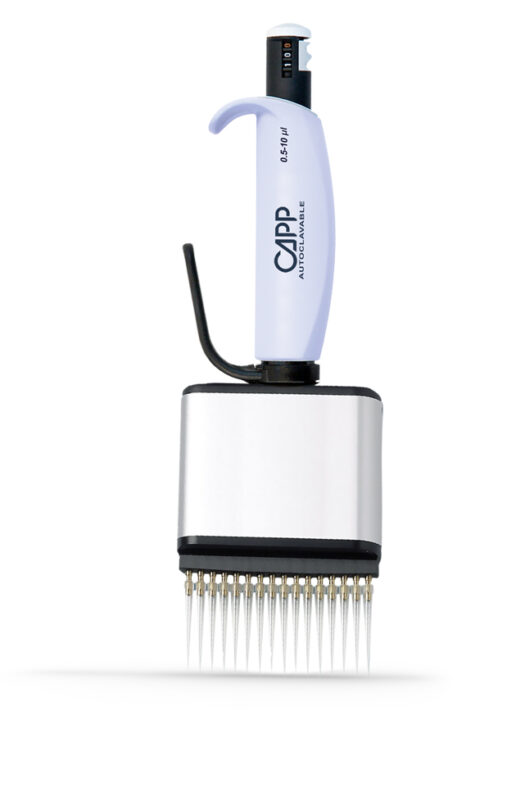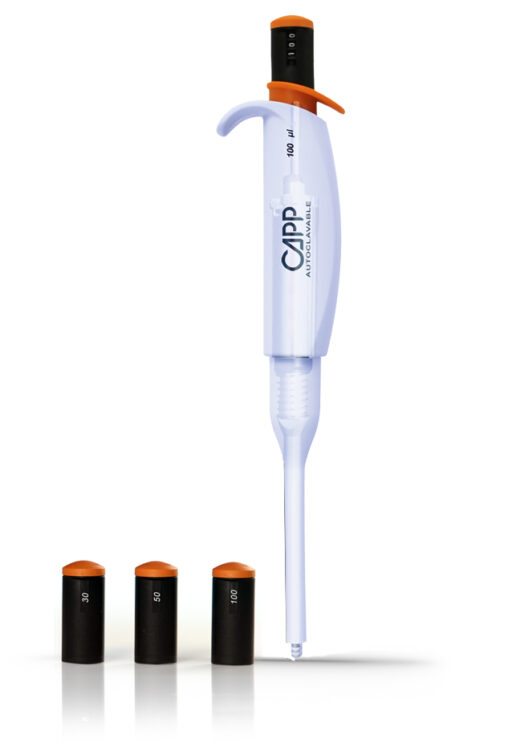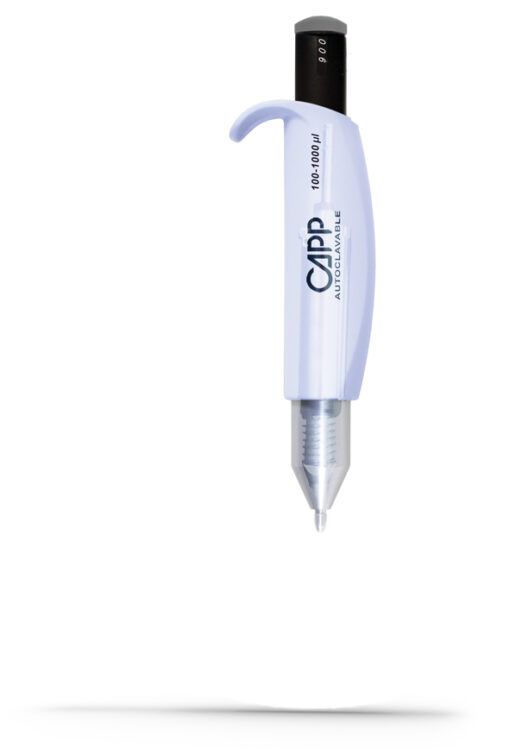CAPP Mechanical Pipettes
Looking for concrete pipette suggestions?
Have a look at the overview of mechanical pipettes, we have prepared for you below.
Showing all 8 results
-
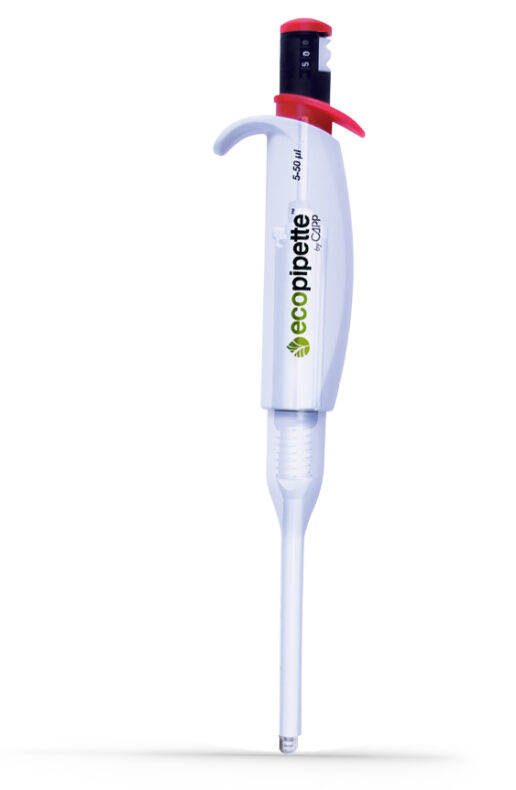
ecopipette Single Channel
Read more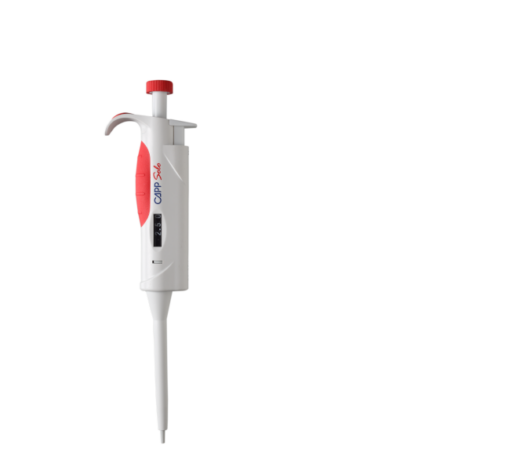
CAPPSolo Single Channel Pipettes
Read more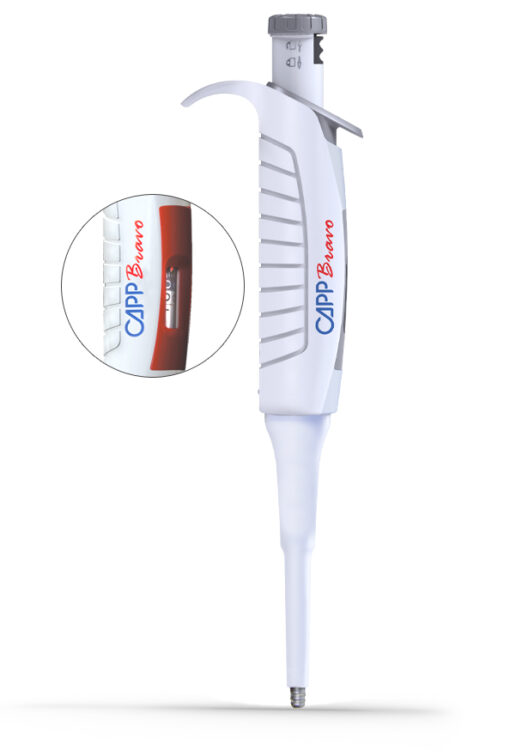
CAPPBravo Single Channel
Read more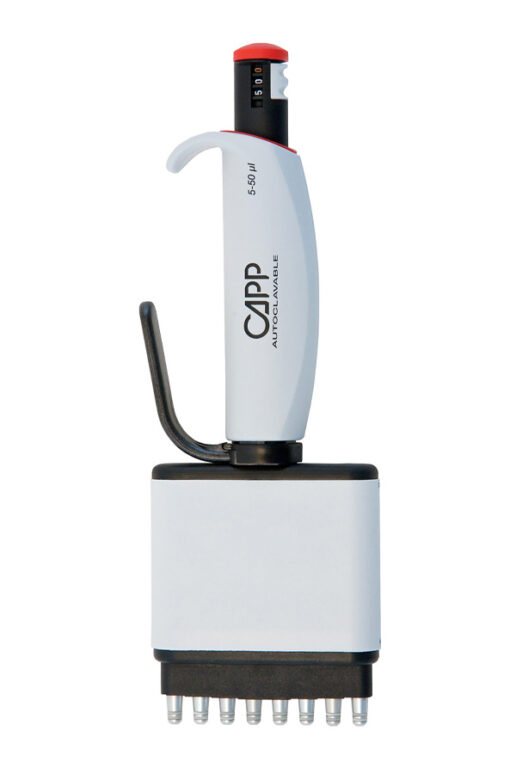
CAPPAero 96 Multichannel
Read more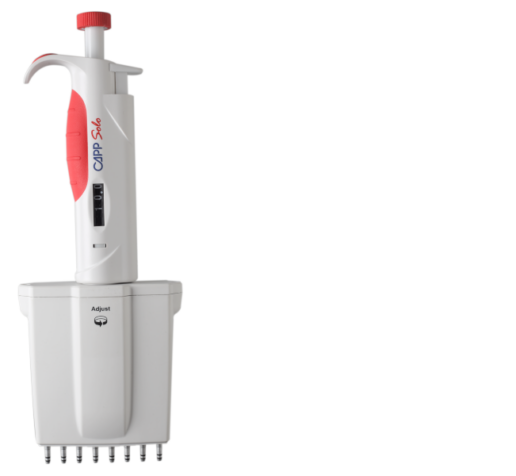
CAPPSolo Multichannel Pipettes
Read more
CAPPSelect Campaigns 2022
Read detailsGET 5% OFF on any CAPP product you are ordering for the 1st time!
Links
Frequently Asked Questions
CAPP mechanical pipettes are designed to offer the best user experience on the market. Each mechanical pipette in our wide portfolio is crafted for a specific usage scenario, allowing users to get the best value from their pipette investment. Packed with lots of innovative features, each CAPP mechanical pipette will give you the edge in your research or clinical practice without paying a premium. To help you understand how our mechanical pipettes work, we have created a helpful guide, answering some of our users' frequently asked questions on mechanical pipettes. As you navigate through the different sections of this page remember to click the links to explore the universe of CAPP's truly accurate, truly robust mechanical pipettes.
Choosing between mechanical pipettes and electronic pipettes may seem quite daunting but at CAPP we make the choice easy. CAPP mechanical pipettes are a great option for budget-restricted laboratories as they maximize savings without compromising scientific output. Mechanical pipettes are faster to set up and make it easy to transfer small volumes with ease. Electronic pipettes are great for speeding up multi-sample liquid transfers. With automated dispensing and programmable features, CAPP electronic pipettes increase efficiency by optimizing pipetting workflows. Click the links to learn more about the different mechanical pipettes and electronic pipettes that are available at CAPP.
Mechanical pipettes are among the most frequently used laboratory instruments, and it is important to choose a mechanical pipet that will integrate well with your workflow. At CAPP we recommend selecting a mechanical pipette with excellent accuracy and precision. These two factors will make sure your liquid transfers are highly accurate and less error prone. To determine this, check the manufacturer's website for proof of independent quality certification. Next, it is important to select a mechanical pipet with excellent ergonomics such as the CAPPAero multichannel pipette. An ergonomic pipette will minimize the risk of strain or injury as you transfer liquids. Additional factors to consider include pipetting capacity, sample throughput, and liquid viscosity, among others. Scroll down to see the overview of CAPP mechanical pipettes.
Using a CAPP mechanical pipette is as easy as pressing a plunger and aspirating. Seriously, it is that easy! Start by adjusting the volume control to the required volume. Place your thumb on the plunger of the mechanical pipet, making sure to keep your hand wrapped securely around the body of the pipette. With your free hand, open the box with pipette tips and gently load a tip by pressing the nose cone onto a tip. Close the tip box and press the plunger to the first stop before lowering the loaded tip into the liquid to be transferred. Pre-wet the tip for 3-5 seconds and release the plunger gently. Once loaded, release the liquid into the desired container by gently pressing the plunger of the mechanical pipette to the second stop. Eject the disposable tip by pressing the ejector hook on your mechanical pipette.
CAPP mechanical pipettes offer excellent ergonomics for industry-leading pipetting comfort. A contoured body provides users extra comfort when handling CAPP mechanical pipettes. Additionally, CAPP mechanical pipettes have a low thumb load to minimize the risk of repetitive strain injury (RSI) when aspirating liquids. The piston stroke on each mechanical pipette is precision engineered for smoothness and thus it also lowers the risk of RSI. CAPP mechanical pipettes also feature a robust and lightweight chassis that allows users to transfer liquids for extended periods without getting fatigued. Click here to learn more about the excellent ergonomics of the CAPP ecopipette mechanical pipette.
Mechanical pipette error can be a huge source of frustration for scientists and technicians alike. This often requires repeating long and tedious protocols to correct the error. By following a few guidelines, you can reduce the incidence of mechanical pipet error and increase your pipetting accuracy every time. Firstly, learning good pipette technique will eliminate one of the biggest sources of error - the user. Regularly servicing mechanical pipettes will keep them in calibration for longer, reducing error and increasing accuracy. Store your mechanical pipettes upright on the bench to prevent liquid from moving into the shaft, potentially damaging the interior. Use high-quality pipette tips to eliminate improper sealing between the tip cone and the pipette tip as this will increase the chances of mechanical pipette error.
CAPP mechanical pipettes are designed to minimize the chances of sample contamination but when accidents happen, the pipettes are easy to clean. For routine maintenance, rubbing the mechanical pipette with water and a mild detergent will remove most contamination. Alternatively, you can use 60-70% ethanol for even faster decontamination. The external and internal materials used to manufacture CAPP mechanical pipettes are also autoclave-ready. This means that you can simply add CAPP pipettes to your autoclaving workflows for fast and effective sterilization of each mechanical pipette. To keep your mechanical pipette free of contamination we also recommend using ExpellPlus filtered pipette tips.
Mechanical pipettes are categorized into two major categories i.e., air displacement pipettes and positive displacement pipettes. Air displacement pipettes are the preferred choice for most laboratory liquid transfers because of their wide range of application. Positive displacement mechanical pipets are less common because they are highly specialized for handling challenging liquids. Modern air displacement mechanical pipettes function by drawing liquid into plastic pipette tips with an air pocket between the plunger and the liquid to be transferred. The air pocket creates a push or pull effect on the liquid, facilitating transfer. Air displacement pipettes come in a range of form factors including single-channel and multichannel varieties. Visit our helpful guide to learn more about the different types of mechanical pipets.
CAPP mechanical pipets come in single-channel and multichannel varieties, and they are designed for different purposes. Single-channel mechanical pipets are an excellent choice for many low-throughput liquid transfers in the laboratory. This includes all single-tube applications, large volume transfers (>1ml) and certain specialty applications that require high-level motor skills (e.g., gel loading). Multichannel mechanical pipettes are the best choice for high throughput liquid transfers involving multi-well sample plates. Examples of such applications include PCR plate reaction preparations and PCR strip transfers. As their name suggests, multichannel mechanical pipettes allow users to increase their efficiency by transferring liquids from reagent reservoirs into multiple sample wells all in one go. Learn more about how CAPP's innovative multichannel mechanical pipets can improve your lab's efficiency.
Most mechanical pipettes feature an adjustable volume mechanism that allows users to transfer variable volumes. Variable volume mechanical pipettes offer excellent flexibility and cost savings by reducing the number of mechanical pipets required on a workstation. However, variable volume pipettes are prone to user error, and this can reduce their accuracy and reliability in volume-sensitive applications. In such use cases, fixed volume mechanical pipets offer greater reliability as they always transfer a fixed volume of liquid with each aspiration. Fixed volume mechanical pipettes are also an excellent choice for routine protocols that require transferring a set volume of liquid. CAPPTrio fixed volume mechanical pipettes combine the best of both worlds by offering interchangeable fixed volume knobs for quick and easy switching between volumes.
Feel free to navigate through the visual product gallery below to learn more about the various mechanical pipettes in CAPP's portfolio. As you click on the product images you will be directed to an informative overview of the features of each mechanical pipet and other useful information to make the process of selecting your ideal pipette easy and straightforward. CAPP mechanical pipettes are beautiful to look at, elegant to hold, and they also offer industry-leading accuracy and precision. If you need help, click here to contact our friendly sales team and they will help you select the best CAPP mechanical pipette for your unique needs. CAPP mechanical pipettes - truly accurate, truly robust!
